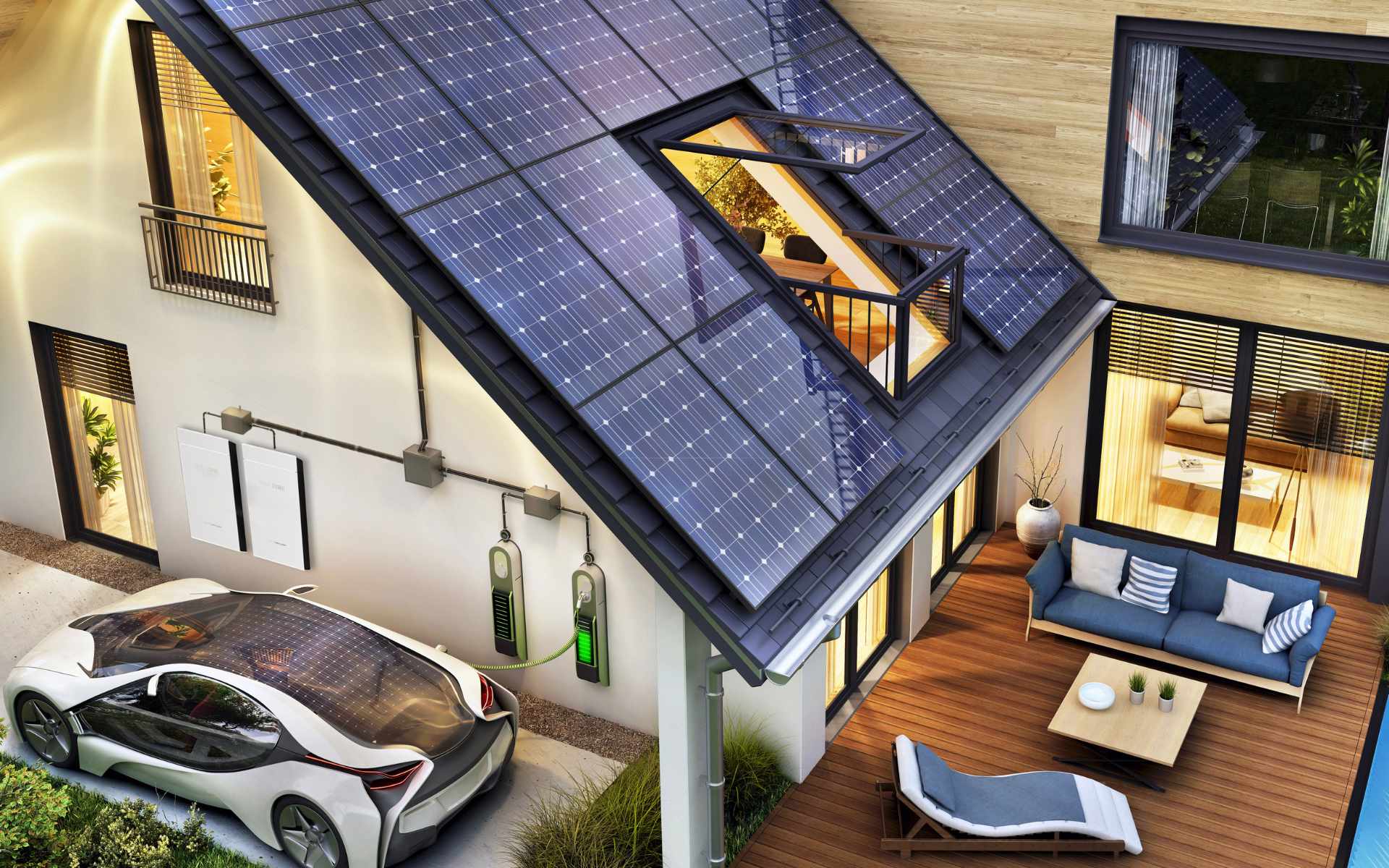Why EV Owners Should Consider Solar

4 Min. Read
If you own an electric vehicle (EV), you’re probably aware of its benefits: EVs are typically cheaper to fuel than gas-powered vehicles, require less maintenance, and of course, reduce carbon emissions.
While driving an EV can provide significant financial savings and reduce your carbon footprint, there’s so much more you can do. By going solar, you can power your EV with free clean energy produced right at home!
Here are three key reasons EV owners are installing solar:
1. You’ll Reduce Your Electricity Bill
EVs protect you from rising gas prices, but they also increase your need for electricity.
Fortunately, EV fuel savings are often greater than the increase to your electricity bill from charging (though this isn’t always true depending on where you live). Considering EVs cut the cost of fuel by about 9 cents per mile compared to gas-fueled cars and the average U.S. driver travels approximately 13,476 miles each year, driving an EV could save you over $1,200 annually.
Still, utility electricity rates are volatile and expensive. Going solar increases the value of your EV investment (and your home) by reducing or eliminating your electricity bill, even with the added demand from charging your vehicle if you size your system accordingly.
Installing solar panels on your home allows you to generate free electricity to power your home and your EV. Additionally, generous tax incentives (such as the solar tax credit) and affordable financing options (including zero-down loans) make going solar easier than ever.
2. You Can Shrink Your Carbon Footprint
A goal of electrification, whether you’re buying an EV or going solar, is to reduce carbon emissions and decrease reliance on fossil fuels. Although EVs don’t release carbon dioxide into the atmosphere when driven, the power source used to charge your EV might.
Let’s say you exclusively power your house with the local utility’s electricity grid and you charge your electric vehicle at home: There’s a good chance that energy comes from a fossil fuel-based power plant. So, although you’re contributing far less than a traditional gas vehicle, you can still lower your emissions.
Pairing your EV with solar panels maximizes its environmental benefits. Solar panels produce emission-free electricity that you can harness to charge your EV and power the rest of your home. The average amount of carbon emissions your home solar panel system eliminates each year has the same impact as planting 100 trees.
3. You’ll Become More Energy Independent
The financial and environmental advantages of pairing your EV with solar panels result from your energy independence. The less dependent you are on outside power sources (including utilities), the easier it is to avoid fossil fuels and expensive energy rates.
For example, traditional cars are dependent on gasoline; since most people can’t install petroleum refineries at their homes like they can with solar panel systems, they still depend on outside resources such as gas stations. This means that drivers don’t have control over where the gas comes from or how much they pay for it.
Switching to an electric car already boosts your energy independence because you can power it with any source of electricity; you can charge your EV at a charging station or at home, using grid-produced electricity or renewable energy. But remember, you can’t control how your utility produces electricity, and most utilities rely on fossil fuels.
Pairing your EV with solar allows you to operate independently from your utility and power your EV with clean energy.
How Many Solar Panels Do I Need for My EV?
Understanding how many additional solar panels you’ll need to charge your EV depends on a couple of things: miles-per-gallon equivalent (MPGe), the average distance you travel, the wattage of the panels, and the production ratio of your system (its estimated annual production in kWh divided by its size in W).
To start, we’ll use the MPGe and average distance traveled to determine how much electricity you need to power your EV for a year.
Let’s say you drive a 2023 Tesla Model 3 that requires 25 kilowatt hours (kWh) of energy per 100 miles and you drive about 30 miles a day. Your EV uses about 7.5 kWh each day (100 miles ÷ 30 miles per day = 3.33 days, and 25 kWh ÷ 3.33 days = 7.5 kWh per day). Based on this, you’ll need around 2,740 kWh of electricity a year to charge your vehicle.
Next, we’ll assume the solar panels you use are 400 watts (W) and the production ratio of your solar panel system is between 1.3 and 1.6. Now, we divide the 2,740 kWh of annual electricity usage by the production ratio and then divide that number by the panels’ wattage of 400 to determine that it will take 5-6 solar panels to charge your EV.
How To Go Solar
Solar is a great financial and environmental fit for many EV owners, but finding the best system for your home can be confusing and overwhelming.
Luckily, the EnergySage Marketplace takes the guesswork out of solar shopping. Use the free online marketplace to compare quotes from vetted installers in your area and connect with an independent Energy Advisor to guide you through the entire process.
It only takes a few minutes to request quotes and, unlike other solar companies, you’ll avoid the annoying sales calls. Start your solar journey with confidence by checking out EnergySage today!
